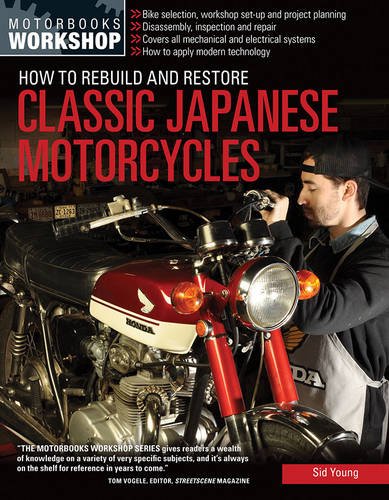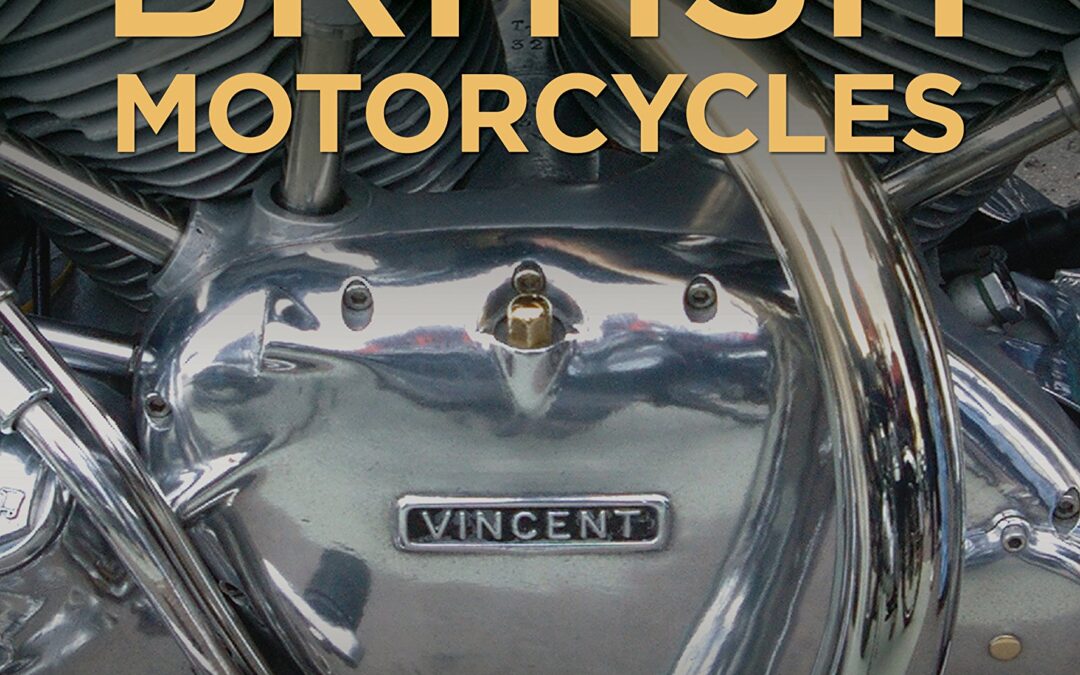
In the modern era, mass-produced motorcycles tend to be of Japanese or Italian origin with the ‘big four’ Asian manufacturers dominating the market. However, it wasn’t always the case. Until the 1950s, even into the 60s, British makers such as Scott, Rudge, BSA, Norton and Vincent ruled the roost. These legendary companies sold their bikes around the world, winning racing championships and setting speed records as they went. They, and many smaller British firms like them, are motorcycling’s founding companies. This is the story of those pioneering firms, whose engineers – many self-taught – were fired by racing ambition, commercial rivalry, patriotic duty, and above all, a passion for innovation. Superbly illustrated with over 150 color pictures many previously unpublished Classic British Motorcycles is a captivating and highly informative account of the men, machines, race meetings and world events that shaped the development of the motorcycle from its bicycle origins.
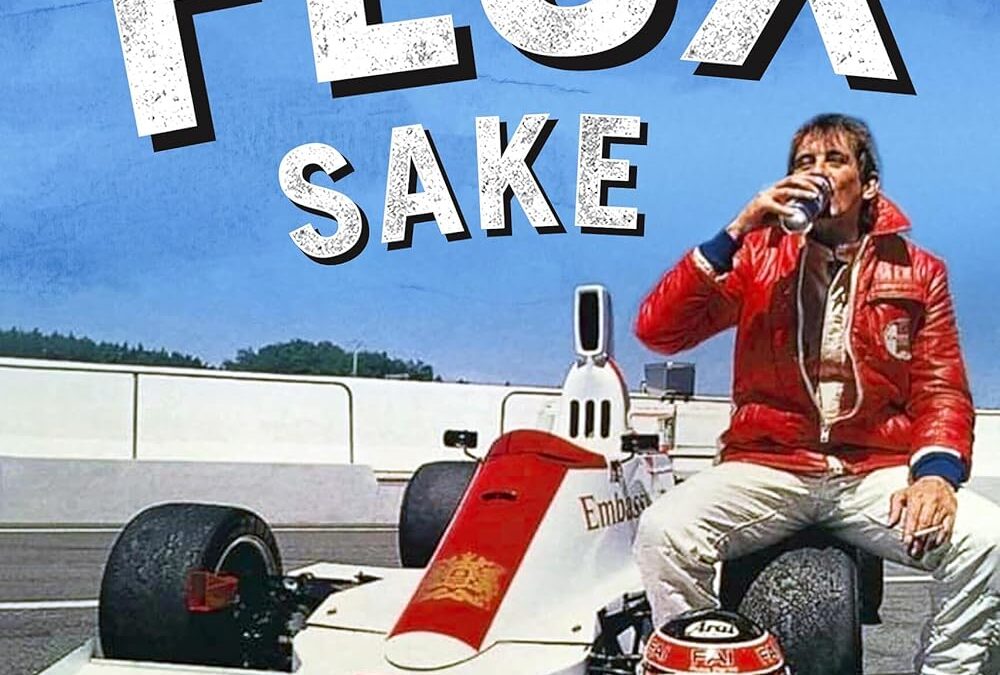
Contrary to popular belief, ‘Fluxie’ did not enter the world on full opposite-lock, nor did he have a cigarette in one hand and a pint in the other. Destined to race, he never got the biggest breaks but he did become one of motorsport’s most colourful and best-loved characters, someone who has always lived life to the full.
Ian Flux’s autobiography tells it how it was, covering not only the highs — including five championship titles — but also the many setbacks. Along the way we laugh with him about much of it, particularly the pranks, but also learn about some dark times that he has never previously divulged.
- Early days: growing up on a farm, first kart aged 6, muddling through in the classroom, lots of laughs — but also sexual abuse from a schoolmaster and an early racing mentor.
- The spark ignites: starting to race in 1970 with a Formula 6 kart, then onwards to Formula Vee; brushing shoulders with Formula 1 working for the Token and Graham Hill teams.
- Grabbing the chances: a Formula Vee title in 1975 leads to Formula 3 and Formula Atlantic, but still with various jobs to make ends meet, including as mechanic to motorcycle racing legend Giacomo Agostini for his four-wheel efforts.
- Diversifying into sports cars: successful adventures in Sports 2000 and Thundersports, winning championships in both, plus Thundersaloons.
- A true all-rounder: going into the British Touring Car Championship from 1988 in a wide range of tin-tops; racing a Jaguar XJR-15 in the big-money 1991 series held at Grand Prix races, including Monaco.
- Championship double in 1996: the ‘golden year’ in the TVR Tuscan Challenge and the British GT Championship, the latter with a McLaren F1 GTR.
- So much else: racing on into recent times, notching up nearly 50 years on track; testing competition cars for Motorsport News; driver tuition and track-day demonstrations.
This is a very different kind of racing driver’s memoir, with lots of laughs along the way together with searing personal honesty.
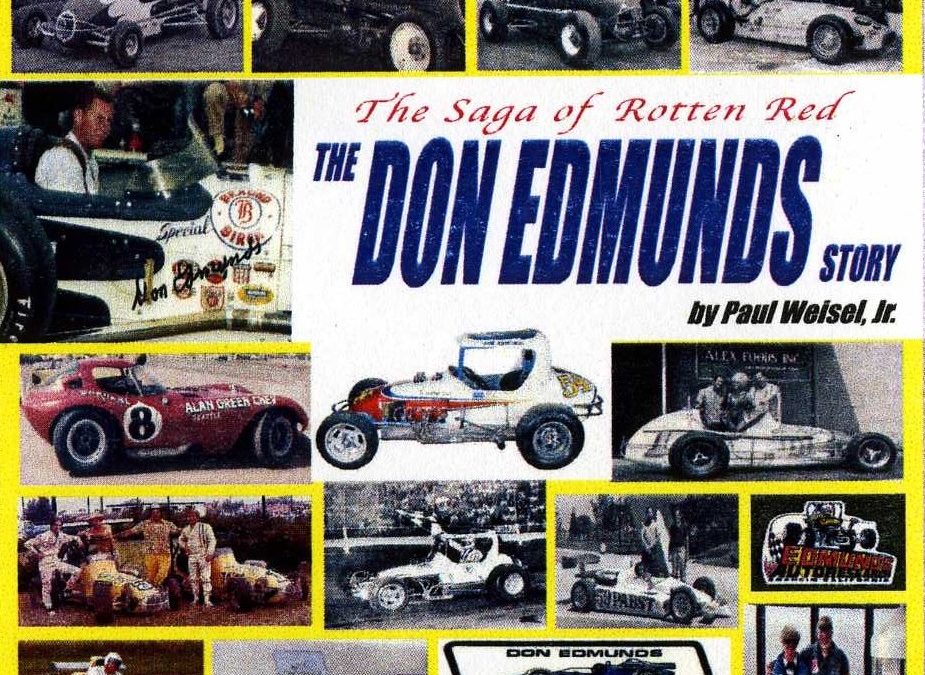
Many people remember Don Edmunds as the premier builder of open wheel race cars during the 1960s, 1970s, and into the early 1980s, but the Don Edmunds story isn’t just about iconic midgets and sprint cars. Don was a true innovator, whose cars combined art and performance and were always at the forefront of open cockpit safety and design, but few readers realize Don Edmunds touched so many parts of the racing world and beyond. Author, Paul Weisel, Jr., has partnered with Don to tell the Edmunds story in a new 182-page book, complete with more than 200 photos, titled, ‘The Saga of Rotten Red – The Don Edmunds Story’.
From his childhood in Anaheim, CA, his teenage years as a part of the southern California roadster scene, including appearances at El Mirage and Bonneville, his first oval track exposure racing jalopies with the California Jalopy Assn., to his graduation to the midgets of the United Racing Assn., the book chronicles Edmunds’ journey toward his greatest racing triumph, qualifying for the 1957 Indianapolis ‘500’ and subsequently being named ‘Rookie of the Year’ at Indy. Along the way Don learned the ropes from car owner, Doug Caruthers, paid attention to tips by drivers, Billy Cantrell, Edgar Elder, and others, worked with Eddie Kuzma, fabricating race cars for Indy and the championship trail, and had his moniker of ‘Red’ transformed forever to ‘Rotten Red’, a tag he has always embraced. Even today, Don signs all his e-mails with ‘RR’. Don types the letters with a grin and all his friends smile when they read to the end of the message.
After Indianapolis 1959 Don retired from driving championship cars and returned to Anaheim to enjoy married life and to pursue his plans to eventually open his own race car shop. Stints with Bill Devin, Bill Stroppe, and Bill Thomas culminated with Don’s design and fabrication of the prototype of the Cheetah sports car and gave Don the practical experience he needed to open Don Edmunds’ Autoresearch in 1964.
Three separate shots at Indianapolis as a car builder and literally hundreds of midgets, sprint cars, supermodifieds, and super vees later, Don Edmunds replaced Frank Kurtis as the country’s most prolific designer and builder of open wheel race cars. Don Edmunds was on the cutting edge of open wheel race car design and later enjoyed a superb career driving supermodifieds, including a junket to compete with cars of his own design in South Africa. In 1991, Don Edmunds was inducted into the National Sprint Car Hall of Fame and in 1994, the National Midget Hall of Fame, two awards he holds in the highest regard.
Away from the track Autoresearch designed and built Evel Knievel’s X-1 Skycycle, the prototype vehicle the stuntman would use to jump the Snake River Canyon in Idaho. Don also became involved in the restoration of several significant 1930-era race cars and used his ‘retirement’ to produce dozens of stunning scale model race cars. Author Paul Weisel takes the reader on all of Edmunds’ adventures and provides insight into the thought process of one of the true ‘dreamers of the day’.

MV Agusta’s classic four-cylinder dominated Grand Prix racing for a decade from 1956. When it was replaced by the new triple in 1966, Count Agusta decided to make the Four available in limited numbers as a production bike. To prevent privateers converting it into a Grand Prix racer that might embarrass the factory, he stipulated it should be 600cc and have shaft final drive. The touring 600 eventually evolved into the 750 Sport and GT, and finally the America, but MV Fours were always built in extremely small numbers.
As befits an engine that handed multiple World Championships to John Surtees, Gary Hocking, and Mike Hailwood, the technical specification was staggering, and remains so to this day. This magnificent engine was always at the heart of the MV Agusta, and it was this engine that created and sustained the legend.
One of the world’s foremost motorcycle historians, Ian Falloon is the author of several books on motorcycles, and has spent many years as a regular contributor to a number of motorcycle magazines worldwide, specialising in Italian marques, particularly Ducati, Moto Guzzi, Laverda, and of course, MV Agusta.
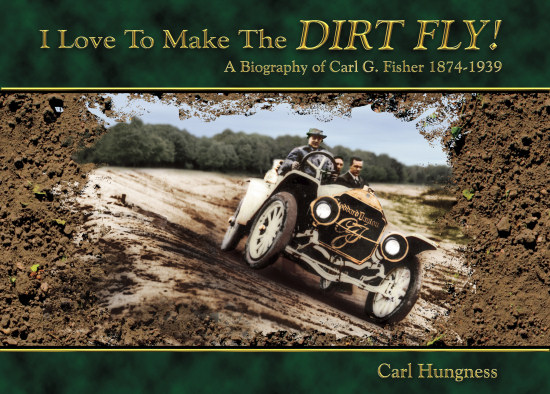
Carl Fisher was an indomitable huckster and salesman who started his working life pedaling magazines and bicycles before making his mark as the key moving force behind creating and building not only the Indianapolis Motor Speedway but also Miami Beach. He’s also considered the father of the Lincoln and Dixie Highways, America’s first interstate road systems, and the creator with IMS partner Jim Allison of Prest-O-Lite, manufacturer of the first mass market automobile headlight.
The title for Hungness’s book comes from Fisher’s love of carving something out of an empty field or wilderness. ‘I love to make the dirt fly!’ was one of Fisher’s favorite sayings which he would deliver with a wide grin at the site of one of his latest field or forest-clearing construction sites. He also loved high society, polo, parties and alcohol.
During this time Fisher started racing bicycles and after a visit in 1900 to a show for the burgeoning horseless carriage industry in New York’s Madison Square Garden he became a convert and soon was selling motorcycles and automobiles. His bicycle shop became ‘Fisher’s Garage’ and then ‘The Fisher Automobile Company’ as he emerged as one of Indianapolis’s most prosperous citizens.
In October of 1908 Fisher indulged in one of his most renowned publicity stunts when he flew a hot air balloon across the skies of Indianapolis while seated in a brand new Stoddard-Dayton automobile suspended beneath the balloon!
At the time the fledgling automobile industry was booming with more than 76 manufacturers setting up shop in the state of Indiana. Most of them lasted only a few years but the fever for automobiles resulted in Fisher building a giant, 2.5-mile test track on the outskirts of town in partnership with Arthur Newby and Jim Allison. The Indianapolis Motor Speedway opened in 1909, the first 500 was run two years later and the 100th running of the world’s oldest race takes place next year. Of course, Fisher went on to engage in many other entrepreneurial escapades, including founding and developing the Prest-O-Lite company with Allison and Miami Beach with Henry Flagler.
‘I love to make the dirt fly!’ will provide readers with a thorough appreciation of the spirit that made both the Indy 500 and America great.
